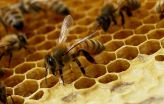(Press-News.org) A longstanding mystery about the tiny stars that let loose powerful explosions known as Type Ia supernovae might finally be solved.
For decades, astronomers have debated whether one white dwarf star, or two, is necessary for firing up this particular kind of supernova. The answer is not merely academic. Understanding the nitty-gritty physics and diversity of Type Ia supernovae will help illuminate our study of the evolution of galaxies and the strange cosmic force known as dark energy.
"It's about understanding one of the ultimate mysteries about stars," Laura Chomiuk, an Assistant Professor in Michigan State University's Department of Physics and Astronomy, told The Kavli Foundation in a roundtable discussion. "Something in the universe makes one percent of white dwarfs commit suicide and explode as supernovae. We are only now starting to have an idea of what causes this."
Chomiuk was one of four astrophysicist who came together to discuss the importance of two studies, published earlier this year in the journal Nature, that offer some of the strongest evidence to date that either one or two white dwarfs can trigger Type Ia supernovae.
"Previously, we all thought there was just going to be one scenario for Type Ia supernovae," said Andrew Howell, a Staff Scientist at Las Cumbres Observatory Global Telescope Network (LCOGT), an adjunct faculty member in the Physics Department at the University of California, Santa Barbara (UCSB), and an author of several recent papers. "But now we're starting to see that there are many different ways to make a Type Ia supernova."
The Nature studies relied on a new theory proposed by physicist Daniel Kasen. He predicted that the material hurled out from an exploding white dwarf "corpse" star should create an observable ultraviolet flash when it slams into a nearby, normal companion star. That companion star is a necessary ingredient in the single white dwarf scenario, as it provides the matter that triggers the white dwarf's thermonuclear explosion. An alternative scenario calls for two dwarfs to merge and blow up.
Observational astronomers, such as Howell, have recently seen Type 1a supernovae with and without the telltale ultraviolet flash predicted by Kasen.
"People have discussed over the years whether companion stars could survive the blast from a nearby supernova explosion. But nobody had asked, 'What would it look like to actually see that happen?'" said Kasen, an Associate Professor of Astronomy and Physics at the University of California, Berkeley, a faculty scientist at the Lawrence Berkeley National Laboratory, and a coauthor of one of the Nature papers. "So I did a back-of-the-envelope calculation to estimate how hot that collision would be, how bright it might be, and so on. Surprisingly, the collision turned out to be bright enough to be seen on Earth. That gave the observers an idea of what to look for."
These discoveries have come about in large part thanks to new telescope survey projects, using a suite of instruments available in space and on the ground, and advances in computer modeling that strengthen theoretical models.
"It's not just new capabilities but all these new capabilities working together that are allowing us to make such progress," said Lars Bildsten, the Director of the Kavli Institute for Theoretical Physics (KITP) and a Professor in the Physics Department at the University of California, Santa Barbara.
A more thorough knowledge of Type Ia supernovae will inform many areas of astrophysics and cosmology. For instance, the energy unleashed by supernovae can modify galaxies by dispersing the matter required by new stars to form.
Type Ia supernovae also explode with an intrinsic brightness, which scientists have long relied on to calculate cosmic distances. Such distance measurements are integral for tracking the acceleration of the expansion of the universe due to dark energy.
Amazingly, Type Ia supernova can outshine entire galaxies of billions of stars, making them easy to spot across cosmic history. Getting the mechanics right of these explosions will further explain how the deaths of certain stars make for such impressive stellar pyrotechnics.
INFORMATION:
Read the full conversation with Chomiuk, Bildsten, Kasen and Howell on The Kavli Foundation website: http://www.kavlifoundation.org/science-spotlights/captured-last-tiny-stars-spark-fierce-supernovae-explosions
In a paper titled Hummingbird tongues are elastic micropumps which appears in the August 19 issue of Proceedings of the Royal Society B, Alejandro Rico Guevara and Margaret Rubega from the Department of Ecology and Evolutionary Biology and Tai-Hsi Fan from the School of Engineering, say that fluid is actually drawn into the tongue by the elastic expansion of the tongues grooves after they are squeezed flat by the beak.
Their data shows that fifty years of research describing how hummingbirds and floral nectar have coevolved will have to be reconsidered.
What is actually ...
Researchers from North Carolina State University have developed an efficient algorithm that can interpret the wheezing of patients with breathing difficulties to give medical providers information about what's happening in the lungs. The research is part of a larger, ongoing project to develop wearable smart medical sensors for monitoring, collecting and interpreting personal health data.
The work was done by Saba Emrani and Hamid Krim, researchers in the National Science Foundation Nanosystems Engineering Research Center for Advanced Self-Powered Systems of Integrated ...
CHICAGO --- Polycystic ovary syndrome (PCOS) has been passed down in many families for generations -- causing reproductive and metabolic health problems for millions of women around the world. Yet, its cause remains unknown despite more than 80 years of research since the disorder was first described in 1935.
A new Northwestern Medicine genome-wide association study of PCOS -- the first of its kind to focus on women of European ancestry -- has provided important new insights into the underlying biology of the disorder.
Using the DNA of thousands of women and genotyping ...
LAWRENCE -- Compulsory schooling laws instituted in the late 1800s and early 1900s caused more people in Northern states to marry people at their same education level and race, possibly contributing to economic inequality, according to a University of Kansas researcher's study.
Emily Rauscher, a KU assistant professor of Sociology, found no increase in assortative mating in Southern states as a result of the laws, suggesting the influence of educational expansion on marital sorting depends on context.
"It's difficult to know why the compulsory laws had different effects ...
Solo travellers don't go alone because they have to, they do it because they want to, a new Queensland University of Technology study has found.
Professor Constanza (Connie) Bianchi, from QUT Business School, said there were a growing number of people who preferred to travel alone, despite having family and friends.
She said solo travellers were choosing freedom, uncompromised fun and meeting new people over the desire to have a companion to share their experiences.
In a study published in the International Journal of Tourism Research, Professor Bianchi looked at ...
This news release is available in Japanese.
An international research team has some good news for the struggling honeybee, and the millions of people who depend on them to pollinate crops and other plants.
These valuable pollinators have faced widespread colony losses over the past decade, largely due to the spread of a predatory mite called Varroa destructor. But the bees might not be in as dire a state as it seems, according to research recently published in Nature Communications.
Researchers found a population of wild bees from around Ithaca, New York, which ...
Current international disease surveillance systems are mainly based on reports made by doctors after treatment of infected patients. As a consequence, disease-causing microorganisms and resistance bacteria have time to spread and make large population groups sick before they are detected.
There is currently only very limited information about the global occurrence and transfer of antimicrobial resistance and infectious diseases.
Researchers at the National Food Institute and DTU Systems Biology are working to develop faster methods to detect and respond to outbreaks ...
Scientists at VIB and KU Leuven have shown that blocking the PHD1 oxygen sensor hinders the activation of p53, a transcription factor that aids colorectal cancer (CRC) cells in repairing themselves and thus resisting chemotherapy. Chemotherapy resistance remains a major clinical issue in the treatment of CRC. These findings indicate that PHD1 inhibition may have valuable therapeutic potential. The study was published in the leading medical journal EMBO Molecular Medicine, which features molecular biology-driven research.
Chemotherapy remains the most widely used cancer ...
Safinamide (trade name: Xadago) has been available since February 2015 as add-on therapy for the treatment of mid- to late-stage Parkinson disease in adults. In combination with levodopa alone or together with other Parkinson disease medicinal products, this monoamine oxidase (MAO-B) inhibitor is used to help restore dopamine levels in the brain. The German Institute for Quality and Efficiency in Health Care (IQWiG) examined in a dossier assessment whether this drug offers an added benefit over the appropriate comparator therapy.
Such an added benefit cannot be derived ...
The study, by scientists at the University of St Andrews, shows that simple increases in a man's height and age automatically makes them appear more dominant.
The research, published today (Wednesday 19 August 2015) by the SAGE journal 'Perception', sheds light on why Hollywood directors might choose certain actors to play leading roles.
The study was carried out by Carlota Batres, Daniel Re, and Professor David Perrett of the Perception Lab at the University's School of Psychology & Neuroscience.
Carlota and her team used computer graphic manipulations to make subtle ...

